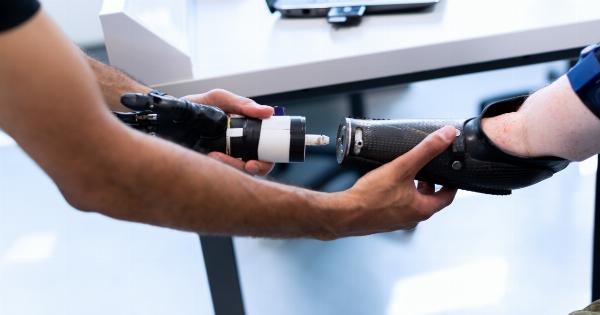A quadriplegic man in the United States named Adam Gorlitsky has regained the ability to walk, thanks to the help of a robotic walking suit.
The robotic device is strapped around his waist and attaches to his legs, helping him to stand while its controls are held in his hands. Gorlitsky is one of only a few dozen people in the world to use this revolutionary technology, which has given him the freedom to move and walk on his own again.
What is Quadriplegia?
Quadriplegia, also known as tetraplegia, is a medical condition that results from a spinal cord injury. The injury affects the spinal cord and can leave the individual paralyzed from the neck down.
This means that they may suffer a complete loss of movement and feeling in their arms, legs, and torso.
Adam Gorlitsky’s Injury
Adam Gorlitsky was just 19 years old when he was involved in a car accident that left him with quadriplegia. The accident damaged his spinal cord, leaving him unable to move his legs or legs.
For the next 11 years, he had to get by with the use of a wheelchair and assistance from others.
The Rise of Robotic Technology
In recent years, there have been a number of developments in robotic technology that have opened up new possibilities for individuals with mobility difficulties.
One such technology is the robotic suit – a device that straps around the user’s waist and legs and helps them to stand up and walk. There are a few different companies developing robotic suits, but the one that has helped Adam Gorlitsky is called the ReWalk system.
ReWalk System
The ReWalk system is made up of a wearable robotic suit that has motors at the hips and knees to help users stand upright and walk. The device is controlled by the user, who holds a pair of controls that send signals to the device to tell it what to do.
When the user shifts their weight forward, the device takes a step forward. When they shift their weight back, the device takes a step back.
Using the ReWalk Suit
Using the ReWalk suit requires a lot of training and practice, as the user needs to learn to control the device and balance themselves as they stand and walk. Adam Gorlitsky spent two years working with the suit before he took his first steps in it.
During this time, he underwent intensive training and physiotherapy, as well as strength exercises to build up his muscles in preparation for walking on his own again.
The Benefits of Walking Again
The ability to walk again has been life-changing for Adam Gorlitsky. He says that the ability to stand and walk has improved his mood, his physical health, and his overall quality of life.
He’s also found that people treat him differently now that they see him standing and walking again. As he puts it, “People just approach me differently. They talk to me like I’m a person, not a guy in a wheelchair.”.
The Limitations of the ReWalk Suit
While the ReWalk suit is a groundbreaking technology that has helped change the lives of many individuals with mobility difficulties, it is not without its limitations. The device is expensive, making it difficult for many people to access.
It also requires a lot of training and practice to use and may not be suitable for all quadriplegic patients depending on their level of injury and overall health. Additionally, the ReWalk suit only works well on flat and even surfaces – any uneven terrain can make it difficult for users to balance and move safely.
Other Robotic Suit Technologies
The ReWalk system is not the only robotic suit system being developed for individuals with mobility difficulties.
Other companies, such as Ekso Bionics, are working on similar devices that aim to help people with spinal cord injuries to stand and walk again. The technology is still evolving, and it’s possible that we’ll see more advanced devices developed in the future that are even more effective than the current offerings.
Conclusion: A New Hope for Mobility-Impaired Patients
The ReWalk system has been a game-changer for individuals with mobility difficulties, giving them hope that they can regain some or all of their independence.
While the device is not suitable for every quadriplegia patient, it has changed the lives of those who have been able to use it, like Adam Gorlitsky. It’s an incredible example of how technology can be used to improve quality of life for those who are struggling with a disability, and it’s exciting to think about where we might go from here.






























